Ceramic Folk Art from Around the World
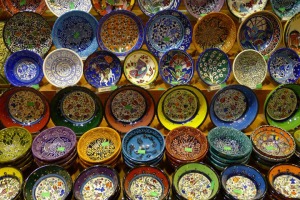
The monthly ArtSmart Roundtable brings together some of the best art-focused travel blogs to post on a common theme. This month we are focusing on National Art – whether iconic styles that remind us of a certain place, or a movements that developed in and became emblematic of a region. Be sure to check out everyone’s posts below!
Every culture makes utilitarian objects like furniture, clothing and ceramics. Folk art is decoration applied to these functional items which reflects the tastes of a people. In addition to seeing works from professional artists in a national museum, I am always on the look-out for local craftspeople or cultural museums that show off local folk art. As a lens to compare several cultures, let’s take a look at some traditional ceramic styles around the globe.
Italy
Italian ceramics, especially from Tuscany, may be the first thing that comes to mind when you think of international ceramic styles. The Deruta style with its Renaissance flourishes, grotesque heads, and white, yellow and blue palette remains popular today. Know as Majolica, Italian tin-glazed pottery can be found all over the country with decorations varying from fruits to stylized geometric patterns. The curls, flowers, scrolls and animals developed during Renaissance can still be widely found.
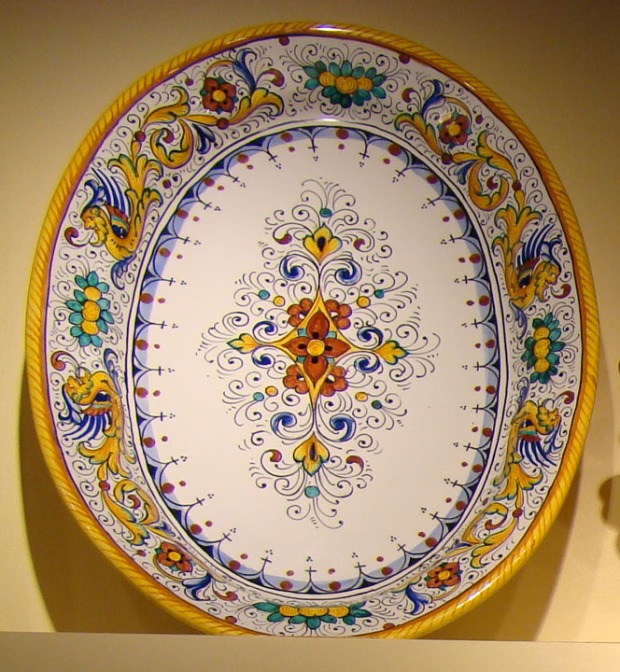
Classic Deruta Ceramic style platter (Photo: F. Tronchin, flickr)
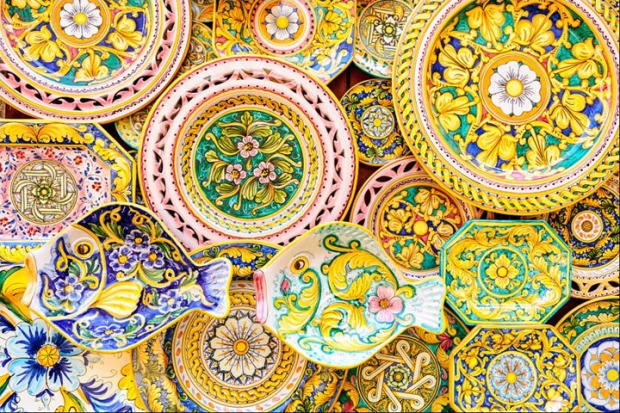
Ceramics on sale in Sicily (Photo: Jos Dielis, flickr)
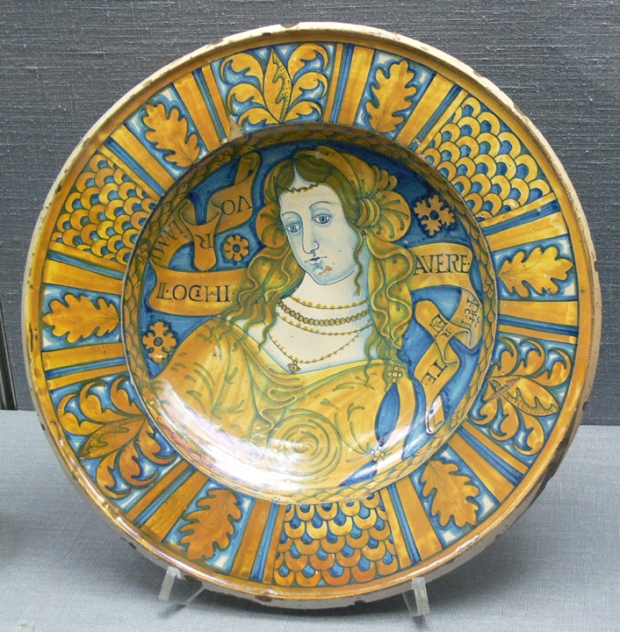
Historic Deruta pottery from 1520/1525, Kunstgewerbemuseum, Berlin (Photo: Wikicommons)
Turkey
Ceramics in Turkey run the spectrum from folk art to very high art. In the 16th century, the city of Iznik developed a decorative style characterized by finely detailed blue rosettes, tulips, and vines. The “Blue Mosque” in Istanbul earned its nickname because of all the impressive blue Iznik tiles used to decorate the interior. While the Iznik factories eventually declined, this style is still obvious in today’s ceramic pieces. Shoppers with also find more provincial patterns with larger flowers, fish, and abstracted vegetation patterns.

Two Iznik tiles on display at the Art Institute of Chicago (Photo: Wikicommons)

Bowls for sale in the Grand Bazaar, Istanbul (photo: Carsten ten Brink, flickr)

The tulip motif is definitely my favorite! A tulip pattern tile on display at the Los Angeles County Museum of Art (Photo: Wikicommons)
Poland
Polish pottery really appeals to me for its delicate floral designs. Generally decorated with a blue and pink palette, small repeating patterns and hand painted accents produce a quaint countryside look to this pottery. The surface regularity is created by using sponges or templates to decorate each piece.
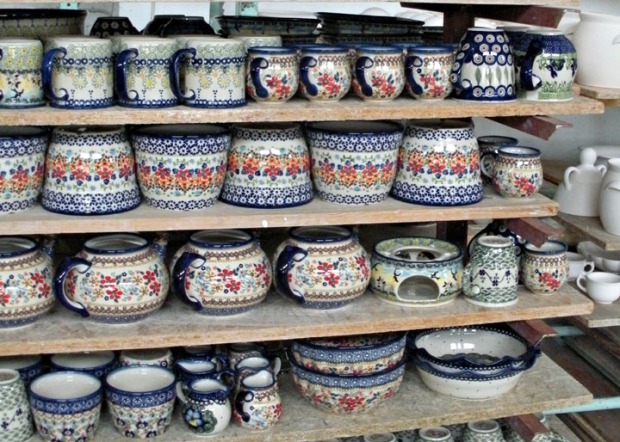
Polish ceramics decorated with pleasant floral patterns (Photo: Kim, flickr)
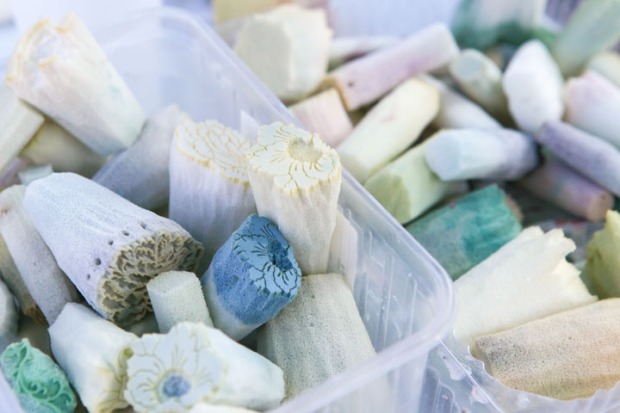
Ceramic stamps from the Boleslawiec Pottery Festival (Photo: Poland’s Ministry of Foreign Affairs, flickr)

Blue Polish Ceramics (Photo: Poland’s Ministry of Foreign Affairs, flickr)

Don’t let the cutsy flowers fool you, these dishes can hold up the richest Borsch! (Photo: Alpha, flickr)
Japan
The Japanese take an different approach to pottery. Rather than using repeating decorative patterns, the ceramic vessel is a canvas for detailed scenes. Gardens and mountains are popular subjects with people and animals appearing as minor elements in these grand environments. Subtly in glaze and color is also appreciated. The Japanese developed glazing techniques centuries ago that are still seem in today’s pieces and have been further developed by art potters. The Raku technique involves removing hot pieces from the kiln and placing them in an oxygen-free environment (usually because of combusting saw dust, grass or paper) and can result in matte pieces or ones with a metallic luster depending on the mineral content of the clay and glaze. These simple yet elegant pieces were first used in Japanese tea ceremonies in the 16th century.

Imari ware from the 17-18th century from the Walters Art Museum, Baltimore. This piece was meant for export to Europe and for use in the home. (Photo: Wikicommons)
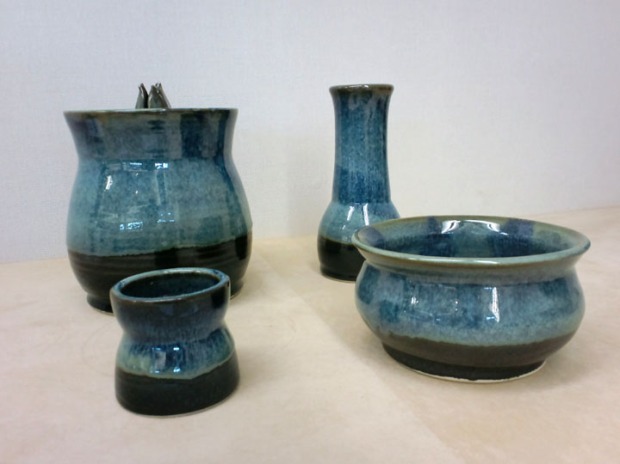
Set of indigo blue pottery pieces (Photo: Wikicommons)
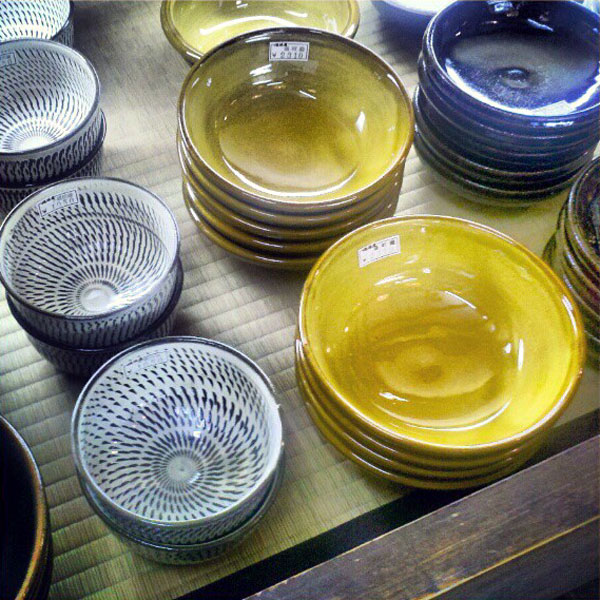
Japanese pottery on sale (Photo: Melissa Lim, flickr)
What is your favorite kinds of ceramics? Have you ever brought pottery home from a trip?
For the rest of the March ArtSmart Roundtable, see:
- Alexandra of ArtTrav – Art and Territory in Conegliano
- Jenna of This is My Happiness – Where to See the Art of Brazil
- Pal & Lydian of Art Weekenders – The Modern Dutch Stijl
- Ashley of No Onion, Extra Pickles – America and Its Skyscrapers







Love the Turkish pieces!
LikeLike
Definitely! The tiles were gorgeous in Turkey!
LikeLike
Wonderful and charming post, Christina. Pottery is certainly an Art.
Although it is not the most beautiful of them, I particularly liked the first pic: the practical olive dish. In Spain they are very common, because we like olives very much as starters in any meal. Your pic made me hungry 🙂
Picasso, as you know well, liked pottery very much. There is a fascinating collection of pottery by Picasso in a little and charming museum in the village of Ceret, in Southern France (www.musee-ceret.com). I would like very much to bring home one piece from their collection, but I am afraid that they would’t allow me to do so. 😦
LikeLike
Wonderful topic! I love ceramics and collect them from my travels. Some of my favorite pieces don’t follow any national style but rather are unique pieces made by local artisans, like ones I picked up in Brazil, Tuscany, Moravia (in the Czech Rep.).
LikeLike
Oh, you’ve hit on one of my favorite topics and collectibles, Christina! One of the best places in the world to see ceramic art, historical and contemporary, is right here in Toronto at the Gardiner Museum: http://www.gardinermuseum.on.ca/
Their permanent collection contains exquisite examples of the diverse forms you show here. A great place to while away a rainy afternoon!
LikeLike
I love ceramics! I actually have a growing collection of bowls and dishes from around the world – Portugal, China, Japan, Vietnam just to name a few. I’m very excited by that gorgeous Polish pottery which I hope to add to my collection in the very near future 🙂
LikeLike
Wow, you’ve got a nice collection going! The Polish pottery is definitely one of my favorites. Hope you find something wonderful!
LikeLike
I think that I would choose a piece of Hutzul folk art from Kolomyia, Ukraine.
LikeLike
Love the variations and the contrast between Japans ornate and minimalistic ceramics.
I would be happy to have any of these adorning my kitchen.
This would make some great souvenirs as well – I’ll definitely add one to my list of things to bring back from Italy in June.
LikeLike
You are going to have a great time shopping for ceramics in Italy! There are such beautiful designs and lots of selection. Maybe get something from France too for the contrast 🙂
LikeLike
What a gorgeous blog. I loved the colourful pottery and was dying to pick up a spoon and enjoy the bowl of borsch.
LikeLike
I totally understand! Both the borsch and bowl look wonderful! Thanks 🙂
LikeLike
Very nice this collection of ceramics around the world! I am always fascinated by the production process, the final result and how this varies everywhere.
LikeLike
Thanks! It’s amazing to see such diversity in the designs around the world.
LikeLike